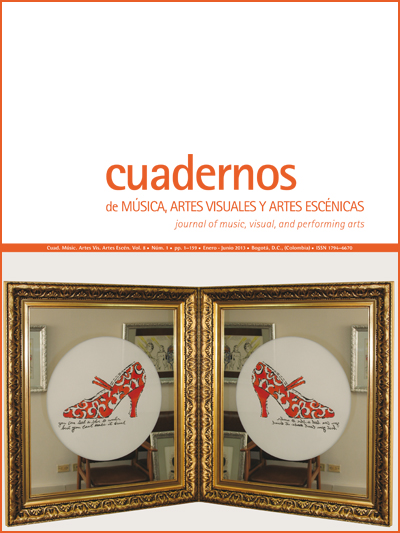Abstract
The purpose of this article is to approach videoform and video-art from an aesthetic perspective. To do so, firstly I present a reflection about the statusof the image in Western culture, trying to bring forth its obscure character and the fear it seems to have always generated. This point is based on platonic arguments that lead us to conceive a possible path towards overcoming iconoclasm through surrealism, film and photography. From that standpoint
I draw an ontology of the video-form that, in the last part of the text, enables us to reach an aesthetic reading of video-art.
This journal is registered under a Creative Commons Attribution 4.0 International Public License. Thus, this work may be reproduced, distributed, and publicly shared in digital format, as long as the names of the authors and Pontificia Universidad Javeriana are acknowledged. Others are allowed to quote, adapt, transform, auto-archive, republish, and create based on this material, for any purpose, provided the authorship is duly acknowledged, a link to the original work is provided, and it is specified if changes have been made. Pontificia Universidad Javeriana does not hold the rights of published works and the authors are solely responsible for the contents of their works; they keep the moral, intellectual, privacy, and publicity rights.
Approving the intervention of the work (review, copy-editing, translation, layout) and the following outreach, are granted through an use license and not through an assignment of rights. This means the journal and Pontificia Universidad Javeriana cannot be held responsible for any ethical malpractice by the authors. As a consequence of the protection granted by the use license, the journal is able to publish retractions or to correct information already published. Publishing contents in this journal does not generate royalties for contributors.


